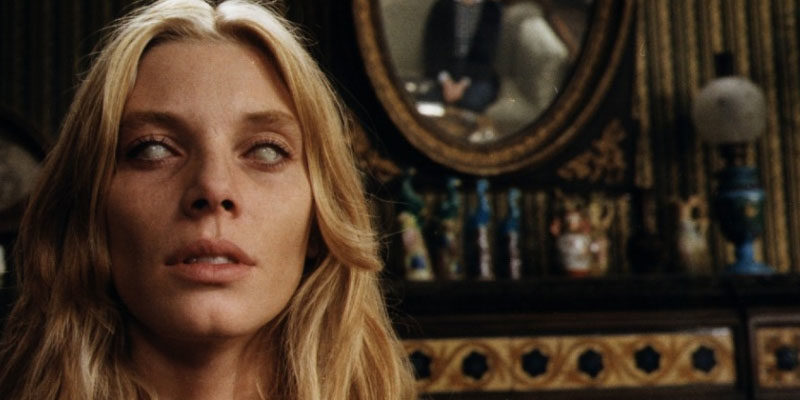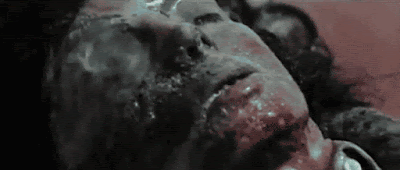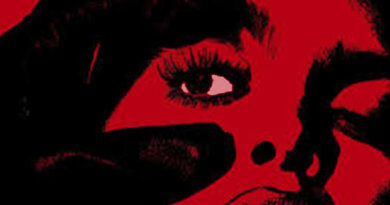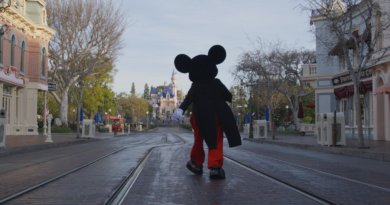‘The Beyond’: Lucio Fulci’s Fever Dream
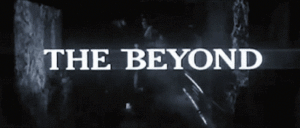 Prolific Italian director made his mark on world cinema, for better or worse. He had his high points for sure (Zombie, Don’t Torture a Duckling), but he also made some unintentionally hilarious misfires (Murder Rock). Somewhere in the middle is his Gates of Hell trilogy. I chronicled City of the Living Dead and House by the Cemetery in erlier posts, but the middle installment, The Beyond, had remained unwrit.
Prolific Italian director made his mark on world cinema, for better or worse. He had his high points for sure (Zombie, Don’t Torture a Duckling), but he also made some unintentionally hilarious misfires (Murder Rock). Somewhere in the middle is his Gates of Hell trilogy. I chronicled City of the Living Dead and House by the Cemetery in erlier posts, but the middle installment, The Beyond, had remained unwrit.
Well, thanks to Mondo and Alamo Drafthouse, that all changed. In 2015, I was able to see what many consider to be the director’s chef d’ouevre the way it was meant to be seen — via a speckled 35mm print with visible reel changes. And although I’ve seen the film on DVD many times before, this analogue theatrical presentation makes it a more visceral experience — in more ways than one.
A bit of history — after the successful Zombie/Zombi 2 reignited the director’s career, Fulci decided to defy audience expectations by making three films that reflected his personal taste. He idolized the French surrealist and playwright Antonin Artaud, whose “Theater of Cruelty” motivated him to make the “Gates” trilogy — a series of nearly-plotless films that concentrated more on tone and gruesome imagery as a way to provoke viewer response. Of these three, The Beyond/Seven Doors of Death/L’aldia is certainly the most hallucinatory.
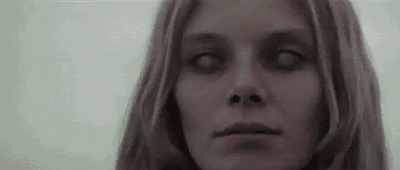 Catriona MacColl had the dubious privilege of playing the lead in all three, and here stars as Liza, a down-on-her-luck New Yorker who inherits a rundown hotel in Louisiana and plans to reopen it as a last means of financial support.
Catriona MacColl had the dubious privilege of playing the lead in all three, and here stars as Liza, a down-on-her-luck New Yorker who inherits a rundown hotel in Louisiana and plans to reopen it as a last means of financial support.
Of course, the hotel has a history of sinister occurrences, not the least of which was the 1927 flaying and crucifixion of a painter named Schweick, accused of sorcery by a local lynch mob. And when a strange woman named Emily (Cinzia Monreale), who sports a pair of bizarre boiled-egg eyes, comes to warn Liza of impending danger, it gets pretty foreboding.
With Zombie stalwarts (cinematographer Sergio Salvati and composer Fabio Frizzi) along for the ride, The Beyond looks and sounds like the Fulci films of that era, but the barely-there plot and slow, deliberate sequences of mutilation transform it into something else altogether.
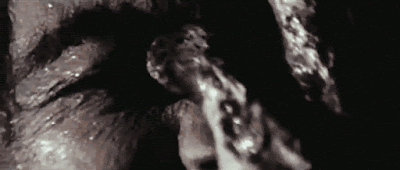 Examples: Liza’s hotel is situated above one of the seven doors to Hell and, as such, is a gateway for all sorts of mayhem. The hired plumber, Joe (whom everyone seems to know and anxiously welcomes, including an unabashedly lustful maid) goes down to the flooded cellar to discover the source of the leak, only to be rewarded by having his eyes gouged out by a monstrous claw emerging from the wall.
Examples: Liza’s hotel is situated above one of the seven doors to Hell and, as such, is a gateway for all sorts of mayhem. The hired plumber, Joe (whom everyone seems to know and anxiously welcomes, including an unabashedly lustful maid) goes down to the flooded cellar to discover the source of the leak, only to be rewarded by having his eyes gouged out by a monstrous claw emerging from the wall.
The maid shows up and discovers his eyeless body with relative calmness, only to seriously freak out when she then sees a mummified corpse. This is one of many strange moments in the film. I mean, surely finding someone you had just moments before been panting after suddenly and violently deceased would be a lot more jolting than spying an obviously dead-for-years husk.
And in a hospital autopsy theater (as they call it), people keep ignoring the “do not entry” sign on the door. First, Joe’s widow comes in to dress him in burial clothes, but when her young daughter, Jill, hears her mother scream (at what we never find out), she rushes inside to find the woman lying motionless on the floor with a large jar of hydrochloric acid slowly dissolving her face.
This is one of several sequences in which the victim seems to just lay there and allow the damage to occur. Furthermore, when a puddle of Mom oozes toward Jill in a crimson tide, she tiptoes away in disgust.
Another wild sequence involves Liza’s friend, Martin, who goes to the local library to find the hotel’s original documents. Perched high on a ladder next to a shelf, he is frightened by a sudden and inconvenient lightning strike and crashes to the floor.
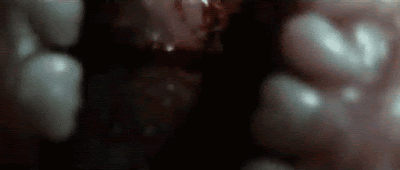 As he lay there immobile (of course), a group of tarantulas — yes, tarantulas — emerge from under a shelf and start to devour his face. As a combination of real aranchids and pipe cleaners attached to fishing line set about ripping out chunks of cheek and piercing his tongue, they make loud crunching noises and also sound like they’re desperately in need of oil.
As he lay there immobile (of course), a group of tarantulas — yes, tarantulas — emerge from under a shelf and start to devour his face. As a combination of real aranchids and pipe cleaners attached to fishing line set about ripping out chunks of cheek and piercing his tongue, they make loud crunching noises and also sound like they’re desperately in need of oil.
Much more mayhem occurs, including Jill acquiring a set of white peepers of her own and Schweick’s corpse popping up at inconvenient times. Liza rushes into the arms of town doctor John (David Warbeck), who first doesn’t believe her story until most of the mangled cast returns to shamble toward them in all their undead glory. They rush from the haunted hotel to the hospital to confront even more reanimated corpses, so they hurry down a spiral staircase to find themselves…back at the hotel.
Like its brethren in the trilogy, Beyond concludes on a grim and hopeless note.
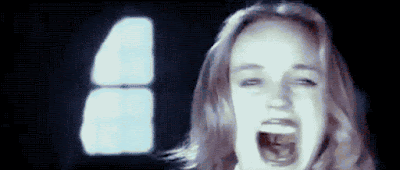 There are two ways to take The Beyond. One way is to howl at Frizzi’s inappropriately funky score during the stretched-out killings, as well as the obvious latex effects; the other is to get into the disjointed pacing and oppressive mood that Fulci was trying to convey, as well as admiring the truly fine frame composition and design of the film.
There are two ways to take The Beyond. One way is to howl at Frizzi’s inappropriately funky score during the stretched-out killings, as well as the obvious latex effects; the other is to get into the disjointed pacing and oppressive mood that Fulci was trying to convey, as well as admiring the truly fine frame composition and design of the film.
Whichever road you choose to take, The Beyond is a bizarre experience you’re sure to remember. It’s certainly not a quickie ripoff by any means.

